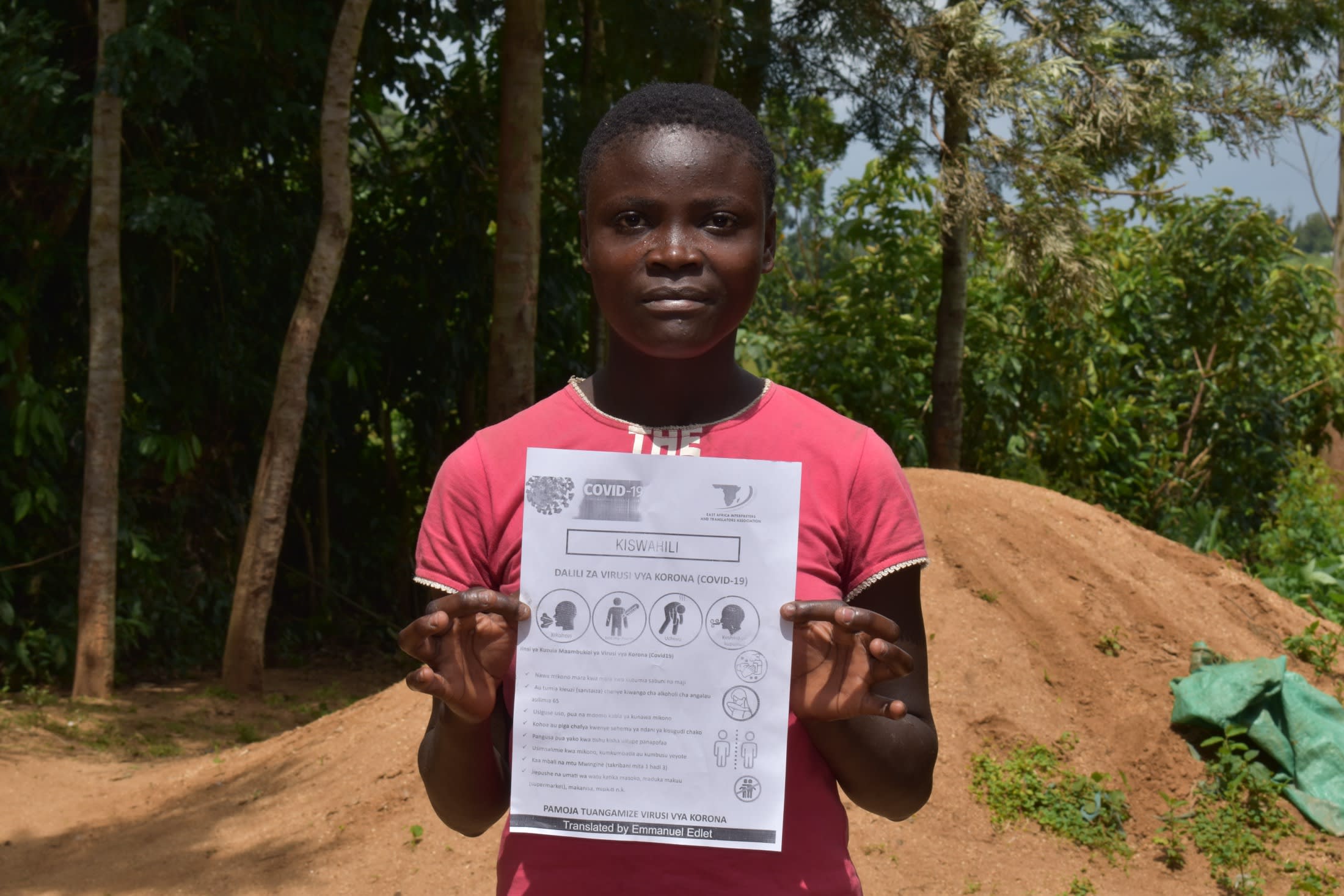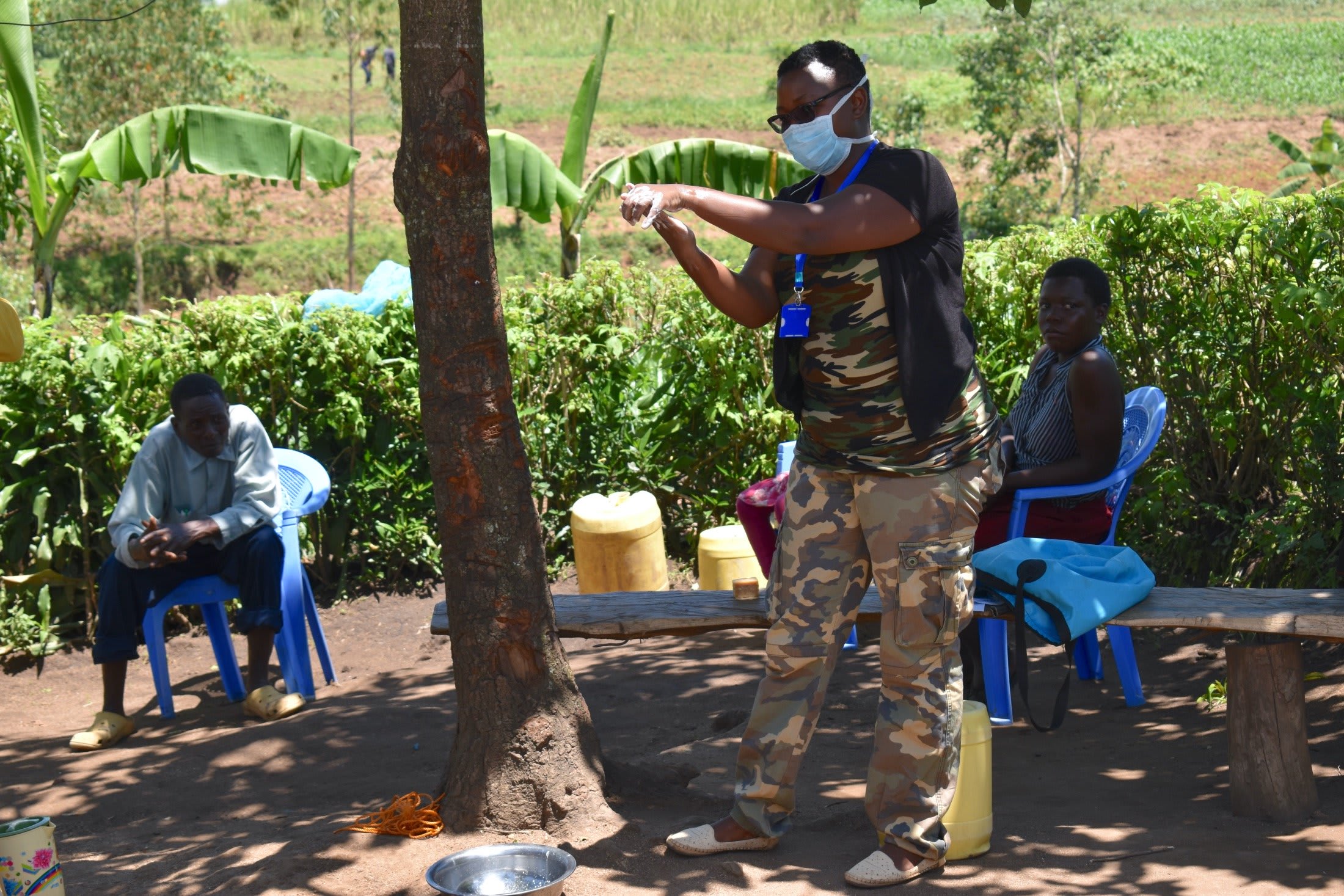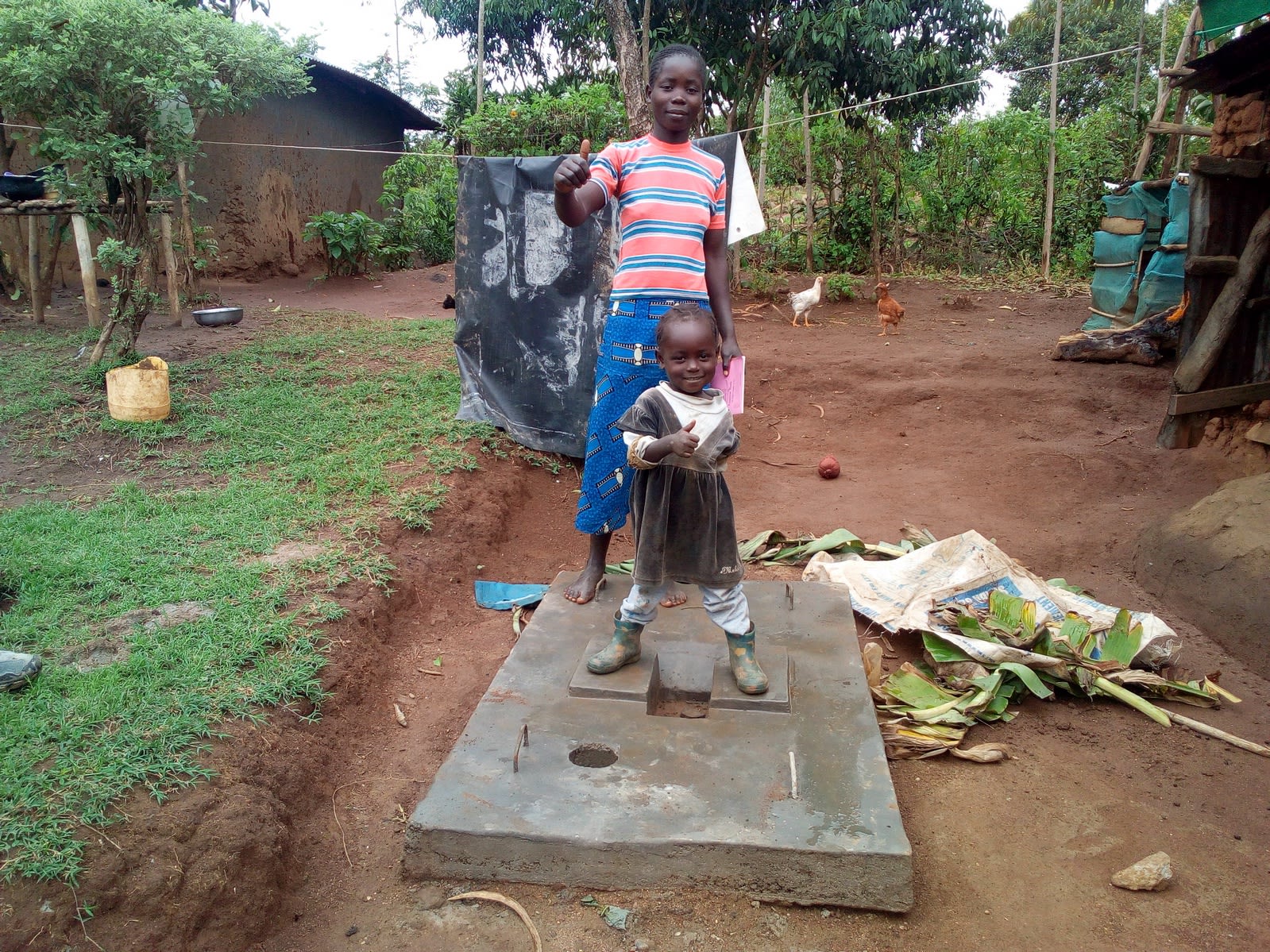In Musango, women and men wake up by 6:30am to start looking for their day's water supply. A lot of the water they gather is used for making bricks, which is their main economic activity. Since there's a lot of construction projects in this area, a brick-maker can always find someone to sell their product to. They also cultivate maize, while others transport people around with their motorbikes.
If a family doesn't farm cash crops, they'll most likely have a smaller kitchen garden to grow food used for their meals. This helps the entire community access enough food for domestic use. Each adult is motivated to provide enough for their families.
Water
M'muse Spring is the main source of water for several families. They use its water for making bricks, irrigating farms, cleaning, cooking, and drinking. Since the water is fairly shallow, people must bring a smaller container to bail water until their larger container is full.
The water pooling at M'muse Spring is contaminated, especially after the rain washes dirt and waste into the water. After drinking it, people suffer from waterborne diseases like typhoid. Mrs. Christine Khayanje said, "We have had enough of this waterborne disease. Now, it is our time for our health to improve while we enjoy drinking clean and safe water."
Sanitation
Less than half of households have a pit latrine. The few we observed are made of mud walls and have iron sheets for roofs. The other families just don't see the need for a latrine, and go in the bushes instead.
Nobody has a dedicated container for washing hands. Instead, they'll use their main storage barrel or the water they've boiled in their kitchens.
Here's what we're going to do about it:
Training
Community members will attend hygiene and sanitation training for at least two days. This training will ensure participants are no longer ignorant about healthy practices and their importance. The facilitator plans to use PHAST (Participatory Hygiene and Sanitation Transformation), CLTS (Community-Led Total Sanitation), ABCD (Asset-Based Community Development), group discussions, handouts, and demonstrations at the spring.
Training will also inform the community about what they need to contribute to make the construction for this project a success. They must mobilize locally available materials, such as bricks, clean sand, hardcore, and ballast. All community members must work together to make sure that accommodations and food are always provided for the work teams.
Finally, a committee will be formed that oversees operations and maintenance at the spring. They will enforce proper behavior and delegate tasks that will help preserve the water point, such as building a fence and digging proper drainage.
Sanitation Platforms
On the final day of training, participants will select five families that should benefit from new latrine floors. The five families must prepare by sinking a pit for the sanitation platforms to be placed over.
Spring Protection
Construction will keep surface runoff and other contaminants out of the water, which means the water will be safe, clean, and adequate.
Fetching water is predominantly a female role, done by both women and young girls. Protecting the spring and offering training and support will therefore help empower the female members of the community by giving them more time and efforts to engage and invest in income-generating activities.
This project is a part of our shared program with Western Water And Sanitation Forum (WEWASAFO). Our team is pleased to provide the reports for this project (formatted and edited for readability) thanks to the hard work of our friends in Kenya.

 Protected Spring
Protected Spring
 Rehabilitation Project
Rehabilitation Project

































